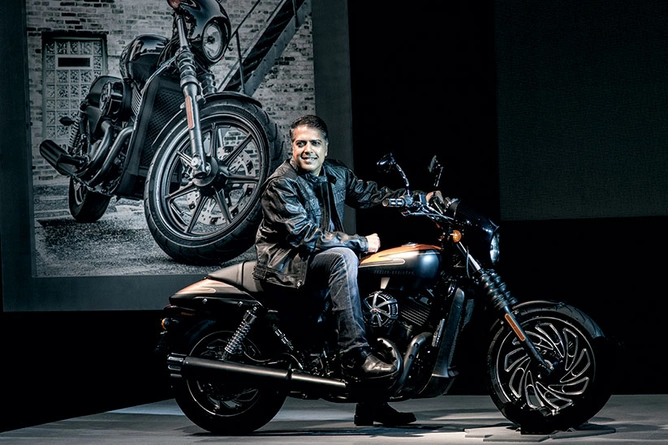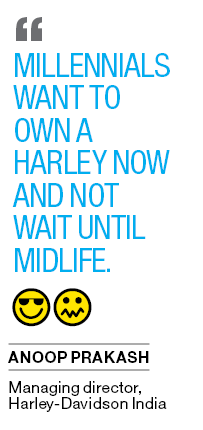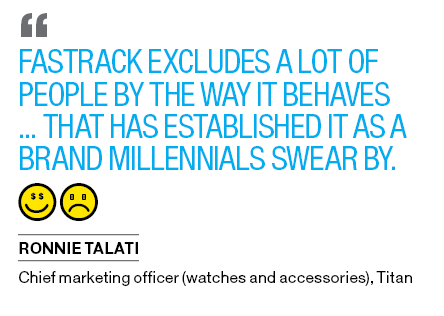If Google Trends spiders are to be believed, millennials (Gen Y in marketing jargon) staged a worldwide coup in 2014. In October, search interest in the term—loosely denoting the generation of 15-34-year-olds that is now a quarter of all humanity—exploded, registering a nearly 500% spike over the same month two years ago. While the U.S. led the surge, India fuelled the glut in Asia.
A bulk of those searches would have pinged the same stereotypes: Millennials hate being herded, yet they are a fixture at the frontline of mass movements (think Sochi Olympics or Hong Kong). They are prickly about individual space, yet perfectly happy to stay with parents. They are an irresistible sales catchment, yet notoriously difficult to sell to.
Hallowed mastheads like Time have lent credence to this slippery image. The magazine’s May 2013 cover had a girl engrossed in shooting a selfie framed by the lines: ‘The Me Me Me Generation: Millennials are lazy, entitled narcissists ... why they will save us all.’ Late last year, the White House came out with a report (‘15 Economic Facts about Millennials’) that makes the same point in more diplomatic terms: “The significance of millennials extends beyond their numbers,” says the report, “... [they] stand out because they are the most diverse ... generation to date.”
This diversity is becoming an enormous headache for marketers, who are conventionally trained to put consumers in neat boxes. “Millennials may be many things, but they may not be what you expect,” reads a Nielsen study (‘Breaking the Myths’). The study provides some clues on how to get their attention: Blend in with their social circles which are exclusively online and mobile, stress on “creativity” and “authenticity”, show that you support local communities, and involve them in a cause—but avoid spiel like the plague. In other words, be cool, but don’t push it.


In India, where 600 million millennials account for half the country’s population, the implications of that are hitting home. An Edelman study says 74% of millennials believe they influence the purchase decisions of their peers and those in other generations. With consumer spending in the country poised to quadruple to $3.6 trillion (Rs 227.4 lakh crore) by 2020 according to a report by Boston Consulting Group and Confederation of Indian Industry, harnessing that influence will be a huge boon.
For the moment though, it’s more a curse—the “winner’s curse”, as Titan’s aptly named Millennial Paradox Panel calls it. The idea is at once simple and confounding: Big brands, used to winning market share by plastering their products everywhere using sheer marketing and distribution muscle, need to make themselves a little scant.
In other words, millennials like to “discover” brands that pop up unobtrusively in their natural habitat (online and mobile); brands that are everywhere, or try too hard to be everything to everyone, turn them off.
“To appeal to this generation, brands have to walk the thin line between being ‘popular’, but not too much,” says S. Ravi Kant, CEO of Titan’s eyewear division, and executive vice president, corporate communications. He should know, given Titan’s watches-to-shades label Fastrack is seen as a sort of gold standard in this segment.
Brand expert Harish Bijoor, founder-CEO of Harish Bijoor Consults, likens brands that have grown too big (read mainstream) to “ration shops with nothing new to offer”. Bijoor says millennials prefer brands that are a little below the radar and can fulfil their niche demands.
In their 2012 book How Cool Brands Stay Hot, Joeri Van den Bergh and Mattias Behrer name a cocktail of qualities that can help brands beat the fatigue. They call it CRUSH: coolness, realness, uniqueness, self-identification with the brand, and happiness. Design expert Marc Gobé has coined a funkier idea—brandjamming—which urges brands to tap into intuition and emotional connect (like musicians do) to avoid being reduced to commodities.
These are great ideas, but as with much of management, the devil is in operationalising abstract principles. And there’s always the danger of drowning in analysis.
Jessie Paul, CEO of marketing advisory firm Paul Writer, explains the current flurry of writing on millennials by invoking the generation gap between marketing managers in big companies and this unwieldy demographic they suddenly have to make sense of. “Focus on delivering good customer experience,” which works everytime irrespective of which generation you are selling to, “rather than getting carried away with surveys”, Paul says.
She gives an example of how you can start winning without having to wait for big-bang changes. “If you are in retail, why don’t you provide handheld billing machines in your shops so that your ‘impatient’ young customers don’t have to stand in queues?”
Bijoor says mimicking the digital lifestyle of this generation is a starting point to answer the vexing question: What do millennials really want? “[Digital] is a platform where brands can talk the lingo millennials understand, and talk freely, without the restrictions slapped on traditional media,” he says.


Fastrack, a culturally renegade member of the venerable Tata group which owns Titan, is a classic case study on how to develop this “lingo”. Unlike other brands from Titan’s stable, Fastrack targets college goers and early jobbers, and has built its cult around provocative promos that talk about quick-in quick-out relationships and sexuality, with taglines like “How Many You Have?” and “Move On”. It’s a testimony to the power of the brand that not many remember its low-key origins back in 1997—its tagline then was “Cool watches from Titan”. (The vibrant facelift didn’t come through till 2005. The bet looked even bolder given that it came soon after the collapse of the NDA government’s high-pitched “India Shining” campaign, following which sobriety would have seemed a safer choice.)
In 2012, Fastrack broke new ground by launching and amplifying its Tees product line almost exclusively online, extending the same risqué positioning (which some have dubbed “shockvertising”). As much as 90% of the campaign’s budget was reportedly reserved for digital. The brand is also one of India’s earliest social success stories, with nearly 10 million fans on Facebook where it routinely announces deals and discounts. The strategy has helped it amass the right kind of following, without compromising exclusiveness.
Ronnie Talati, chief marketing officer (watches and accessories) at Titan, says Fastrack’s irreverence is not to be confused with flippancy. “The brand [deliberately] excludes a lot of people by the way it behaves; it makes a lot of people uncomfortable. That has worked wonders in establishing it as a brand millennials swear by.”
Computer-maker Hewlett-Packard (HP) has its own story. It had become a somewhat stodgy brand (“my daddy’s laptop”), lagging far behind cool cat Apple. (The Cupertino company tops the millennials’ preference list for its cutting-edge products and startup-like culture). To recover traction, HP last September launched a makeover campaign called #BendTheRules on digital and social media (supported by traditional platforms like TV, print, and outdoor). The campaign hinges on non-fiction webisodes glorifying millennials who have flouted conventions.
To address the need for self-identification, motorbike maker Harley Davidson and beverage brand Paper Boat (owned by N.R. Narayana Murthy-backed Hector Beverages) have taken to co-creating products with their customers. Harley decided to approach 5,000 global millennials, 700 of whom were from Mumbai, Delhi, and Bangalore, to understand what they really wanted in their next bike. “Millennials across the world wanted a bike that had an urban soul, and, most important, was accessible. They want to own a Harley now and not wait until midlife,” says Anoop Prakash, managing director at Harley-Davidson India. The outcome was the Street750, the first model to be made in India and the cheapest from Harley’s stable, priced at a little above Rs 4 lakh.

Neeraj Kakkar, chief executive of Paper Boat who earlier worked at Coca-Cola, followed the same route when introducing new flavours. “All my life I have been taught that every product follows a fixed formula,” he reflects. But Paper Boat’s desi flavour (golgappe ka paani), introduced in early 2014, has already undergone four recipe changes, based on social media feedback. And more than 50% of the comments came from millennials.
This is another area where the behaviour of millennials is distinct from other consumer categories. Ravi Kant of Titan says millennials feel it is their responsibility to share feedback with brands. “It gives them a sense of achievement as they know their voices are now heard.” Often, that can help brands course-correct from inauthentic messaging. Sachin Taneja, a twentysomething IT professional and startup founder, gives an example. “One can sense a disconnect when a liquor company talks of women’s harassment. Shouldn’t it address more relevant issues like drinking and driving?”
Fastrack’s Talati believes there’s just one “X” factor that keeps millennials engaged—constant reinvention. “If you can do that, they will give their life to the brand,” he says.

SUCH LOYALTY ought to be the holy grail for marketers. Sadly, recent surveys by research firm Gartner and software developer Freshdesk suggest that in 2014, the top 100 global brands failed to keep up the engagement, both on social media and mobile. “On average, the top 100 brands responded to just 22% of tweets directed at them during the week (Dec. 15-22) leading up to the holidays,” says the Freshdesk report. Each of these brands got about 1,000 tweets a week, but only 37% had a dedicated handle to listen to customers.
Simeran Bhasin, chief marketing officer of Bangalore-based outdoor and adventure gear company Wildcraft, and a millennial herself, feels that kind of apathy can be perilous. Millennials may be big on individualism, but as the torchbearers of the sharing economy fuelled by the Internet, they can swing the perception of any brand as a collective. “If you let them down, they will be far less forgiving than any previous generation,” says Bhasin.“Resonating with what millennials believe and care about is crucial. They prefer a brand that does not sit on the fence but goes out and voices its opinions. But it has to be subtle and intelligent in its communication.”
And once a brand has done all that, it must resist the temptation of creating a mass template. “If it’s not ‘me’,” reminds Bhasin, “I won’t go for it.”










Leave a Comment
Your email address will not be published. Required field are marked*